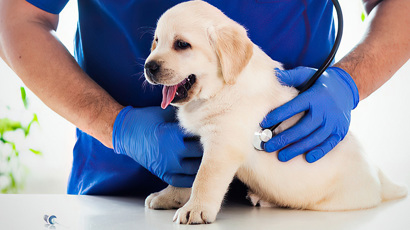Real meat? What does it mean in pet food.

Real Meat: These two simple words are easily said and often printed on pet food bags. Who decides what is and isn’t real meat?
Who decides what real meat is for our pets? Is it the manufacturer? Is it the government? Is it pet parents like yourself? And most importantly, what is really best for our pets?
In the pet food industry, ‘meat’ as a key ingredient, and technically means the parts of the animal (e.g. lamb, chicken etc) which are normally included in dog and cat foods, primarily as a source of protein.
We generally accept this to be skeletal muscle – like the muscular part of the animal, more simply the ‘meat off the bone’, that we eat ourselves – but in pet food, the definition of meat is not so clear, as it includes not only the muscle (meat off the bone), but other highly nutritious animal tissues like offal (liver, heart, kidney and tripe).
While these other parts of an animal contain some important fats and essential vitamins and minerals, the main purpose of meat ingredients is to deliver the protein that is essential for pet to survive and thrive. As one of the major nutrient groups for a healthy diet, protein not only unlocks calories, but it delivers the building blocks (known as amino acids) which allow us all to construct our own bodies.
So, meat ingredients are efficient in delivering proteins, and they are also a great source of amino acids for our pets at a nutritional level.
In addition, protein from meat has also been shown to be more efficient at helping build (and re-build) the body itself. The ‘Protein Efficiency Ratio’ is the name we put to the process of eating, digesting, absorbing, processing and reconstituting protein into our own bodies. It’s a measure of how effective a protein source is in creating the foundation of who we are. For pets, meat proteins provide the structural building blocks better than any other form of protein, as a foundation for their bodies, but also allowing growth and repair as they live their lives.
Meat ingredients consistently outperform vegetables when compared on their protein efficiency ratio1. This makes meat ingredients an essential choice to incorporate as a vital source of protein in pet foods, to help sustain the long-term health and well-being of dogs and cats.
Protein is essential for the growth and development of puppies and kittens, dogs and cats - especially important when they’re injured or ill. Protein allows everyday function of our bodies to take place, and in times of stress or extraordinary performance (like running a marathon or giving birth to a child), protein levels need to increase massively for our bodies to regenerate. Protein fulfils the exact same functions in pets as it does for humans, and the specific needs of dog and cat species is well researched2 and known to those who create premium pet foods, allowing us all to ‘get things right’ when bringing together a recipe.
At Black Hawk our expert vets and animal nutritionists choose real meat as the first ingredients in our food (rather than plants and vegetables) to deliver the protein in our recipes that our pets’ bodies need function and regenerate. The information in this article gives some of the nutritional reasons why inclusion of real meat is important for our pets, but the ultimate test is in the feeding.
After a few weeks of feeding Black Hawk pet food, the benefits should be visible (shiny coat, firmer stools/poo, etc) and the care you’ve taken to choose a pet food with the best quality meat should be obvious in how happy and healthy your pet is.
You can then feel confident knowing that you’re feeding the best food, with high quality meat and real ingredients.
Sources:
1. FEDIAF (2018) Nutritional Guidelines For Complete and Complementary Pet Food for Cats and Dogs, Accessible online: https://oehtv.at/fileadmin/pdf-Dateien/2019_FEDIAF_Nutritional_Guidelines.pdf
2. Dust J. et.al (2005) Chemical composition, protein quality, palatability, and digestibility of alternative protein sources for dogs, J Anim Sci 2005.83:2414-2422.



